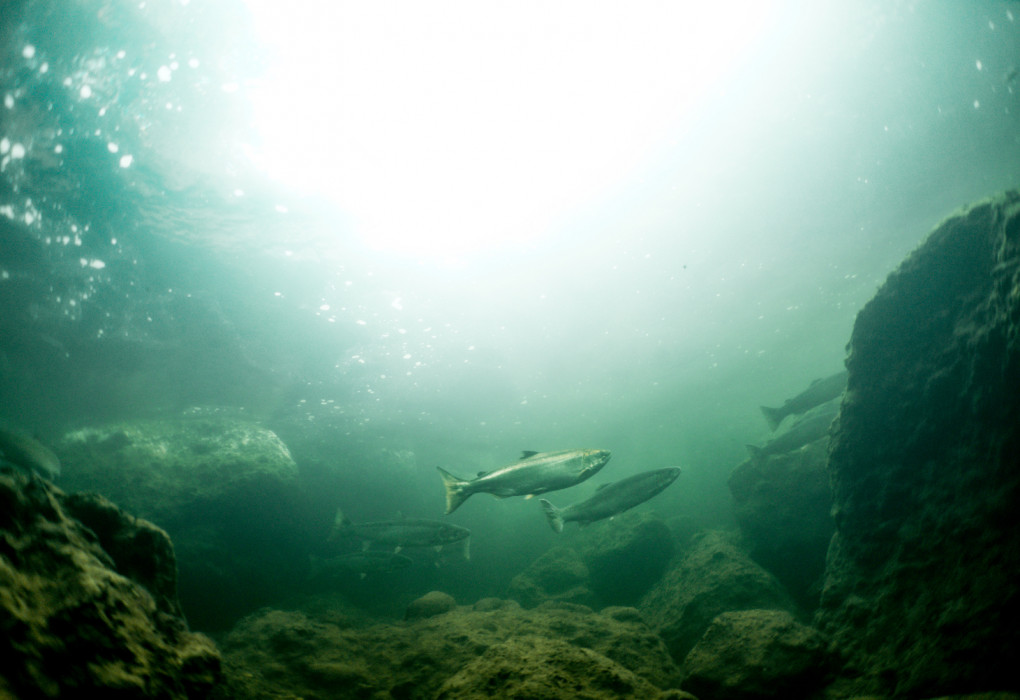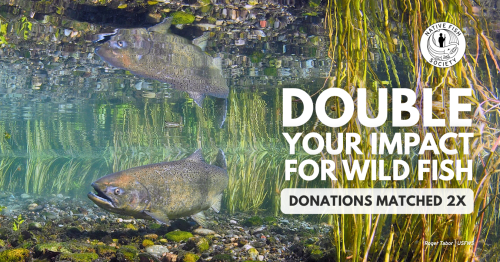Oregon Coast Spring Chinook Salmon One Step Closer to Endangered Species Protections
PORTLAND, Ore.— The National Marine Fisheries Service (NMFS) announced today it will consider Endangered Species Act protections for spring-run chinook salmon on the Oregon coast. NMFS's positive finding responds to a 2019 petition by the Native Fish Society, Center for Biological Diversity and Umpqua Watersheds seeking safeguards for spring-run chinook salmon returning to rivers south of the Columbia River and north of Cape Blanco.
Spring chinook, which scientific evidence shows are distinct from fall-run salmon, return in the spring from the ocean to freshwater rivers, staying for many months in deep pools until they spawn in the fall. Currently, chinook salmon are managed as one population in this region.
“In a poignant example of the shifting baselines, wild spring chinook across the Oregon Coast range have declined from inhabiting almost every river with a major estuary in 1900 to just a handful today.” said Conrad Gowell, fellowship program director with the Native Fish Society. “We hope this petition will lead to a recovery plan that can show our respect, clarify our responsibilities, and regenerate abundant spring chinook throughout their former range.”
“Spring chinook are truly the king of salmon but they still need our help to survive,” said Jeff Miller, a senior conservation advocate at the Center for Biological Diversity. “The Endangered Species Act has saved 99% of species under its protection, and it can save these magnificent fish too.”
“We were greatly relieved when Oregon recently limited wild spring chinook harvest on the main stem of the Umpqua River,” said Stanley Petrowski with Umpqua Watersheds. “It was absolutely needed because of the extremely low number of returning spawners in recent years. This decision to consider endangered species protections is an even more important step in the right direction to preserve this iconic species.”
The Fisheries Service found that listing Oregon spring chinook as threatened or endangered may be warranted, based on threats from logging, overfishing and low streamflow. The Fisheries Service will initiate a scientific status review and take public comments through June 13, 2020 before making a final decision on whether they warrant protection under the Endangered Species Act.
Water diversions and logging operations deplete coastal stream flows during critical periods in summer and fall, and road building degrades salmon habitat and elevates stream temperatures. Other threats include pollutants, river channelization, harvest in commercial and sport fisheries, predation by invasive fish, and climate change.
Background
Former spring-run chinook populations in the Siuslaw, Coos and Salmon rivers no longer exist. Very small populations remain in the Tillamook, Nestucca, Siletz, Alsea and Coquille rivers. The North Umpqua River supports the only remaining large spring-run chinook population on the Oregon coast, with variable returns of 2,500 to 16,000 spawners annually. By contrast the South Umpqua River had only 51 adult spring-run fish return to spawn in 2019.
Recent scientific studies show that spring-run fish are genetically distinct from the more abundant fall-run chinook. The evolution of early returning fish occurred in both salmon and steelhead trout millions of years ago. This difference in spawning run timing is highly unlikely to occur again if these distinct populations are lost.
Four salmon hatcheries operating on the Oregon coast artificially breed spring-run salmon. The goal of these hatcheries is to produce fish for anglers, but in recent years there have not been enough returning adult salmon to produce the next generation. Additionally, hatcheries not aimed at helping rebuild fish stocks may be jeopardizing wild spring chinook by creating competition between farmed and wild fish and unintentionally producing hybrid spring-run and fall-run chinook. Hybrid salmon are not fit for long-term survival in natural habitats and are likely contributing to the disappearance of spring chinook.
The Native Fish Society is a nonprofit conservation organization that cultivates a groundswell of public support for reviving abundant wild fish, free-flowing rivers, and thriving local communities across the Pacific Northwest.
The Center for Biological Diversity is a national, nonprofit conservation organization with more than 1.7 million members and online activists dedicated to the protection of endangered species and wild places.
Umpqua Watersheds is dedicated to the protection and restoration of the ecosystems of the Umpqua watershed and beyond through education, training, advocacy and ecologically sound stewardship.

